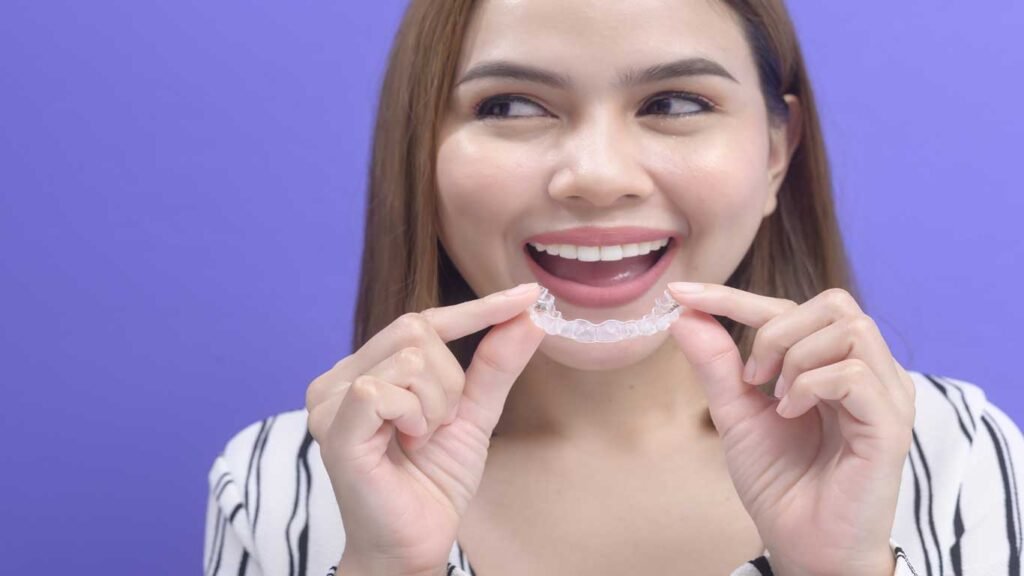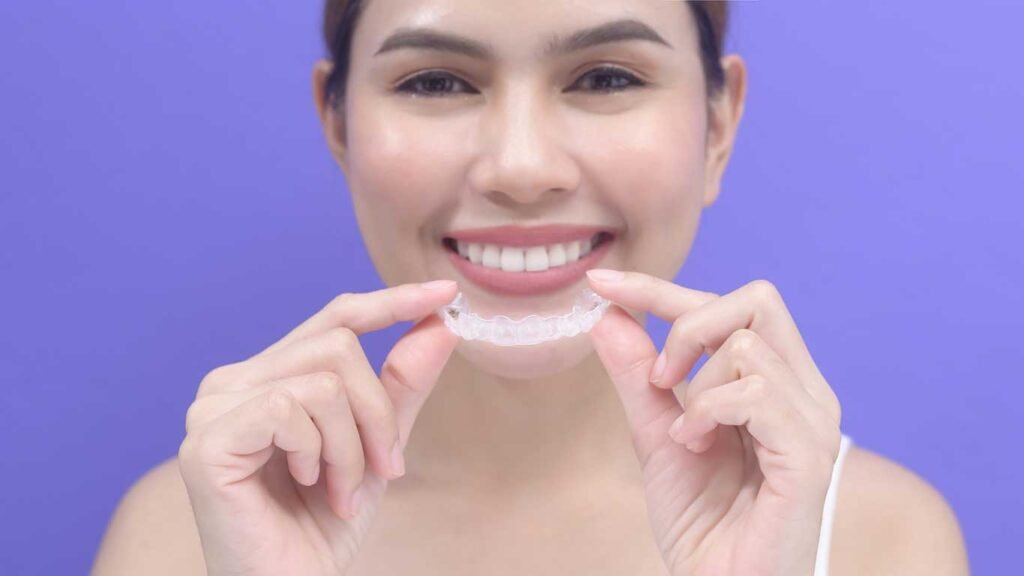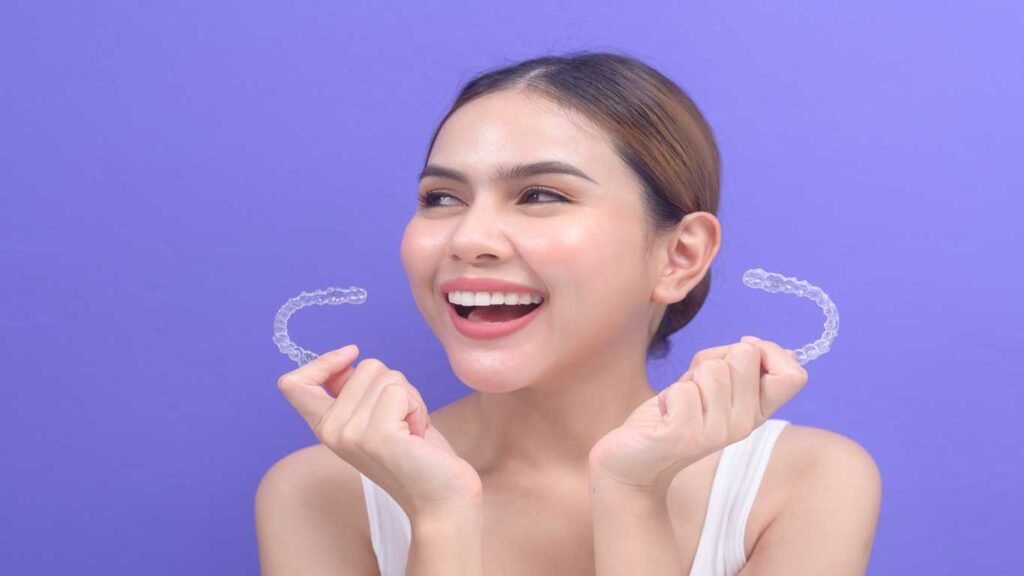Invisalign Age- What’s The Best Age for Invisalign
According to HealthDentalCenter, patients ranging from their early 20s to 80 years old can experience very successful outcomes with Invisalign treatment.
Let’s delve into the topic of Invisalign age and ask Dr. Mir about this specific treatment and the best age for it. This article is an interview-style piece, and we’ll try to cover the most frequently asked questions on the subject.
Invisalign Age- The Best Age for Invisalign
Interviewer:
Dr Mir, What’s your opinion about Invisalign age? I mean, what’s the best age for Invisalign treatment?
Dr. Mir:
Well, in my experience, Invisalign Teen and treating patients around that age can give the best results, mainly because their teeth and jaws are still quite malleable. But that doesn’t mean older people can’t get great results too! The main difference is that younger patients’ teeth tend to move into the desired position faster.
So, if you’ve got healthy teeth, gums, and good bone density, you can expect a successful outcome, even if you’re in your 80s!
There’s something else I’d like to point out, though. Genetics plays a significant role in how people respond to treatment. Some might see results more quickly than others and that’s out of our hands. It really depends on the individual’s genetics.

Invisalign for Adults
Interviewer:
Dr. Mir, please talk about Invisalign for adults in detail. You know, a vast majority of our audience are adults, and they’d like to know about the effectiveness of this treatment for their age. Is this the same as adult ceramic braces?
Dr. Mir:
Well, Invisalign for adults can be an effective treatment for a wide range of dental issues, from gapped teeth to different types of bite issues. As I mentioned earlier, no matter your age, if you have healthy gums, teeth, and adequate bone density, you can expect the best outcome.
When it comes to the effectiveness of Invisalign treatment compared to braces, oh, they’re nearly the same in many cases. But if your dental problem is severe, Invisalign may not be the solution. In this case, we’d instead recommend a traditional brace for your orthodontic treatment.
If patients are concerned about the appearance of traditional metal braces, we may suggest an alternative option known as ceramic braces. These braces are designed with clear or tooth-colored brackets, making them less noticeable and more aesthetically pleasing while still providing effective orthodontic treatment.

Benefits of Invisalign for Adults
Interviewer:
Dr. Mir, could you please walk through the benefits of Invisalign for adults? You know, orthodontic costs are not cheap. Do you believe that the benefits of undergoing the treatment justify the expenses?
Dr. Mir:
Oh, definitely! Having a great smile is totally worth it. After all, nobody likes an unpleasant, unaligned smile. It may even have an adverse effect on our carriers, especially those that require constant communication with different people.
Oh, now, let’s count down the benefits of Invisalign:
- Discreet appearance: Invisalign aligners are made of clear, transparent materials, making them virtually invisible. This is a perfect approach for adults who may feel self-conscious about wearing traditional braces.
- Comfort: Invisalign aligners are custom-made from smooth plastic, offering a comfortable fit without the hassle of traditional braces. You know, metal brackets and wires can sometimes cause mild discomfort or irritation, and it may take a couple of weeks for patients to fully adjust and feel more comfortable with their braces.
- Removable: Unlike traditional braces, you can easily remove your Invisalign aligners for eating, drinking, brushing, and flossing. This makes oral hygiene maintenance much easier and helps prevent issues like tooth decay and gum disease during the treatment.
- No dietary restriction: Since the aligners are removable, you can enjoy your favorite foods without worrying about food getting stuck in braces or damaging them.
- Convenience: If you’re undergoing Invisalign treatment, you’ll need fewer office appointments compared to braces. The aligners can also be switched out at home, making the process more convenient for busy adults.
- Effective Result: Invisalign can effectively treat a wide range of orthodontic issues, including crowding, gaps, and bite problems, giving patients the confident smile they desire.

Invisalign Retainers
Interviewer:
Dr. Mir, could you please discuss Invisalign retainers and explain how they differ from Invisalign aligners?
Dr. Mir:
Both of them are part of orthodontic treatment, but they serve different purposes:
Invisalign Aligners: These aligners are custom-made clear, removable trays you must wear for 20–22 hours per day. They work by applying gentle pressure to teeth and, over time, pushing them to the desired position. Usually, every two weeks, you’ll need to switch a new set of aligners, as directed by your orthodontics.
Invisalign Retainers: After the completion of your Invisalign treatment, you’ll need to wear retainers to maintain the results you achieved during the months of treatment. Invisalign retainers, like Invisalign alingers, are clear, removable trays, but they’re meant to be worn primarily at night, though your orthodontist may recommend wearing them more frequently initially.
Invisalign cost
Interviewer:
Dr. Mir, could you please discuss Invisalign costs? You know, I think for most people, cost is one of the first things that comes to mind. Can you shed some light on this topic?
Dr. Mir:
Absolutely. Invisalign costs can vary depending on several factors, such as the complexity of the case, the length of treatment, and the orthodontist’s experience.
Generally, you can expect the price to range from $1,800 to $9,500. On average, Invisalign treatment for teenagers costs around $3,000. Keep in mind that dental insurance may cover a portion of the treatment, often up to $3,000 for orthodontic care.
Additionally, you can explore flexible payment options, like HSA or FSA accounts, to make your treatment more affordable.
At York Orthodontics, we offer flexible payment plans, like monthly or weekly installments, to not make orthodontic costs a burden on individuals’ shoulders.

Invisalign Limit Age
Interviewer:
Dr. Mir, our last question is about age limitations for Invisalign treatment. Are there any age restrictions for getting Invisalign?
Dr. Mir:
Invisalign can be an effective treatment option for a wide range of ages. The primary requirement is that patients should have all their adult teeth, as baby teeth can affect the precision of the treatment plan. Typically, children reach this stage around 12 to 13 years old.
As for older patients, there is no upper age limit as long as their teeth, gums, and supporting bone structure are healthy. Remember, it’s always best to consult with a qualified dentist or orthodontist to determine the most appropriate treatment option based on individual circumstances.
We would like to extend our special thanks to Dr. Mir for generously dedicating his time to answering our questions.
Dr. Mir and His Professional Background
Dr. Nima Mir is a distinguished dental expert with impressive academic credentials. He obtained his Bachelor of Science degree from York University before continuing his education in the US. Dr. Mir earned his Doctor of Dental Surgery degree from the University of Southern California and furthered his education with a Certificate in Orthodontics and Dentofacial Orthopedics, along with a Master of Science degree in Oral Biology from the University of Nebraska Medical Center. As a Fellow of the Royal College of Dentists of Canada, he is licensed to practice dentistry in both Canada and the United States.
Dr. Mir’s accomplishments have been recognized with several honors and scholarships, including induction into the prestigious Omicron Kappa Upsilon national dental honor society. Outside of his professional life, he appreciates traveling, staying active through exercise, and cherishing moments spent with his family.
